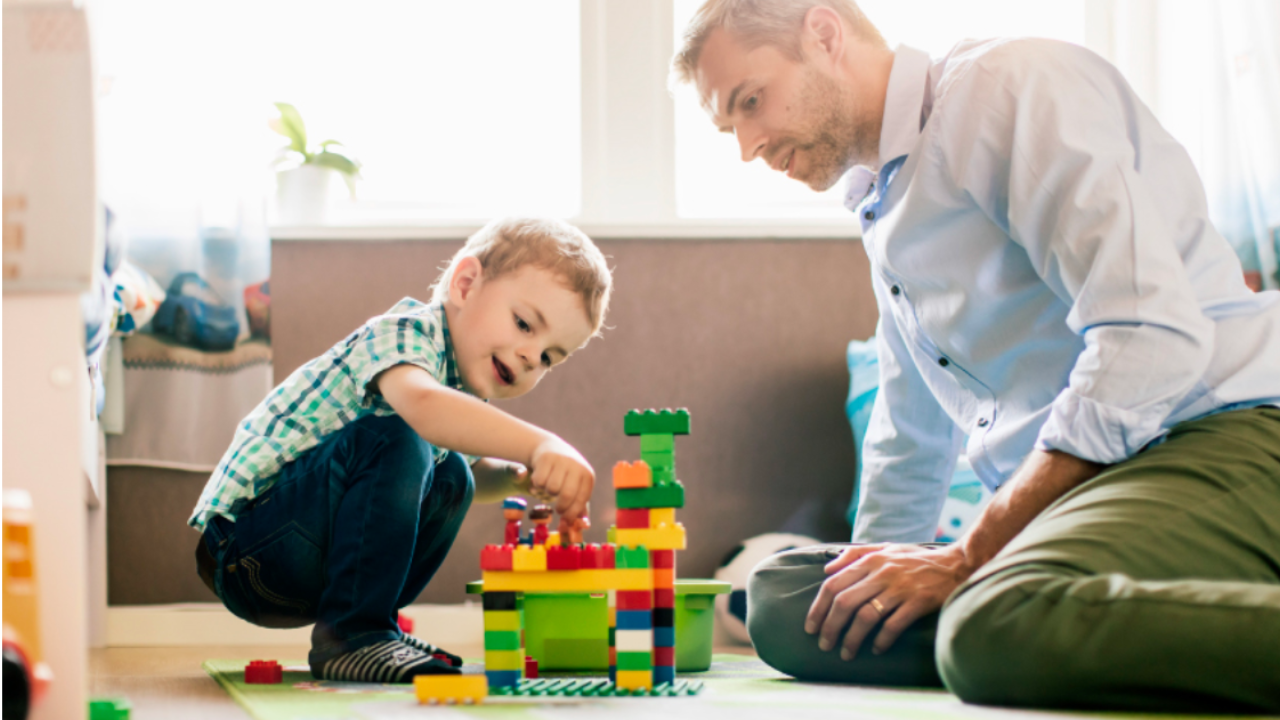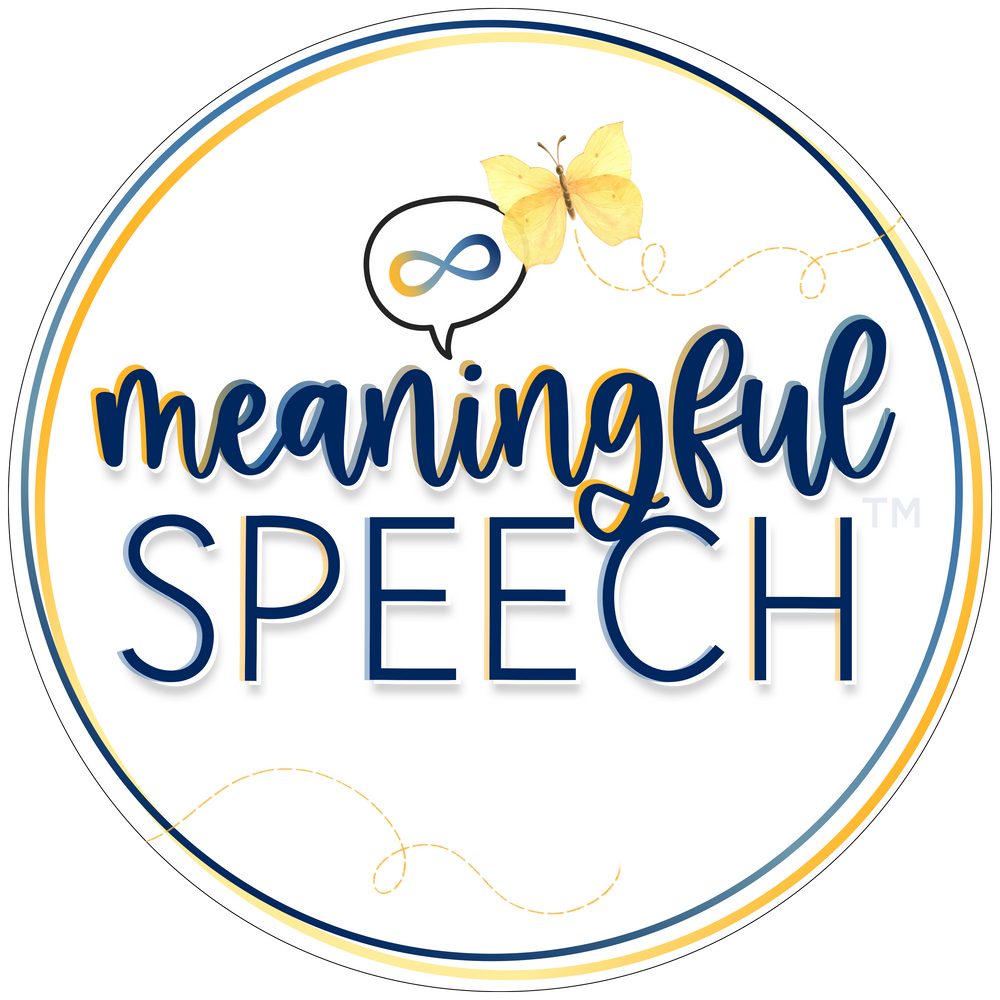There is no Pre-Stage 1 to Gestalt Language Development
Mar 16, 2023
We’re often asked what comes before stage 1 of gestalt language development and how to best support gestalt language processors who are very young (early intervention age) and/or minimally, or non-speaking. The short answer is, there is no pre-stage 1. There are also no prerequisite skills children need before we start supporting them in stage 1.
Important information about the term “preverbal”
- Preverbal is defined as "existing or developing before the development of speech."
- Many SLPs use this term to mean the stage before a child learns to speak. Imitation, joint attention, gestures and general vocalizations are considered "preverbal" prerequisites to speech by many SLPs.
- We know now that joint attention, imitation, gestures and vocalizations often look different (not less) for neurodivergent children.
- Therefore, these should not be targeted to match or judged against neurotypical norms/standards. None of these are prerequisites to speech. We do not need to "build" these and we should really look at not using the term "preverbal" anymore.
If there’s no pre-stage 1, what is it?
If a child is very young (early intervention age), non-speaking or minimally speaking and they are a gestalt language processor they are not in any "pre" stage. They are in Stage 1 of their language development. It all starts in stage 1 for gestalt language processors. Stage 1 is delayed echolalia. It can look very different for different children. Minimally and non-speaking kids won't use the same type of delayed echolalia (ex: YouTube scripts) that some of our speaking children will have.
Let’s review the stages of Gestalt Language Development
Stage 1: Echolalia - THIS is where gestalt language processors are when they’re often labeled as “preverbal”. Again, there is no pre-stage, it all starts here.
Scripting whole gestalts, single word gestalts, and/or intonationally defined strings of language from people, media, songs or books.
Example: "There's a monster at the end of the book!"
Stage 2: Mix and Match Stage or “Trimming down” (Partial Gestalts)
Mitigating larger Stage 1 gestalts into smaller chunks and also mixing and matching parts/chunks of Stage 1 gestalts into semi-unique utterances.
Examples #1 (mixing of two partial gestalts): "There's a monster + under there" = There's a monster under there.
Example #2 (Trimming down): "There's a monster."
Stage 3: Single Words and Two-Word Combinations
Breaking the script down to one word unit and/or making a new noun combination.
Example: "monster", "scary monster", "monster red"
Stages 4-6: New Original Phrases or Sentences with Beginning Grammar, More Advanced and Complex Grammar
Putting word units together to make novel phrases or sentences. At Stage 4, children are using beginning grammar. At stages 5-6, children begin using advanced and complex grammar.
Examples: “The monster goed under” (Stage 4) “The monster can’t get out” (Stage 5), “Shouldn’t he have come out from under the bed by now?” (Stage 6).
Signs your child may be a gestalt language processor even if they are not "talking"...
All of these are signs your child might be developing language in longer units or "chunks" and not word by word (like analytic language processors). They may be a gestalt language processor.
- They can sing songs but don't have any "words." Gestalt language processors are often very musical. They pick up on intonation first so song melodies can naturally become first gestalts!
- The minimal amount of speech the child has is single words that have been taught and "jargon." Children in Stage 1 of gestalt language development may communicate using a mix of unintelligible strings of language and many single words. These single words are “stuck”, meaning they are unable to combine these single words with other words to expand their utterances.
- They are not easily understood but their "sounds" or "jargon" have rich intonation if you listen closely. Many gestalt language processors are trying to communicate long strings of language which can be difficult for young children and/or children have not yet developed the muscle coordination required for these long strings of language.
- If using AAC the child is not making progress despite intensive modeling of a robust system with authentic exchanges. Unfortunately, AAC systems are not yet developed with gestalt language processors in mind. Although, there are ways you can customize current systems to grow with gestalt language processors through the stages.
- The child studies and replays media clips (videos, songs, TV shows, movies). For example, they may replay the theme song or intro of a TV show repeatedly instead of watching the show. They may be more drawn to the melody and intonation of this part of the video and not as interested in watching the show.
How to support very young (early intervention population) and/or minimally speaking and non-speaking children
- Acknowledge anything that is said (even if it just sounds like “sounds” or jargon) with a smile, head nod, saying “yeah” or “okay”, or repeating it back to them.
Example:
Child: produces what sounds like jargon: “Wachgado”
Adult: *nods and repeats the sounds back to the child* “Wachgado!” - Do the detective work! Try and investigate what their unintelligible utterances mean by looking into what they’re watching, listening to, and what other people are saying to them.
Example: A child loves Bluey and they watch specific parts of a few episodes repeatedly. Their parents watch these parts of the episodes and listen to see if anything matches the intonation of an unintelligible string of language the child is communicating frequently. - Get them started with a robust AAC system if they don’t already have one. There are no prerequisites to trying AAC and trying it does not inhibit spoken language. Research shows it actually encourages it!
- Begin modeling new gestalts/scripts with them both verbally and with AAC. Instead of changing the inherent set up of the device, consider adding gestalts the child is currently using and you’re currently modeling to pages with contextual relevance or motor planning considerations consistent with the language organization. Use these to model these scripts both verbally and with AAC.
- Steps are the same for any Stage 1 gestalt language processor whether they’re intelligible or not. All children in the beginning stages of gestalt language development need more gestalts! They need these naturally modeled in their play and everyday life.
Want to learn more in-depth information about how to support gestalt language processors?
- There are many free podcasts, webinars and articles to get you started. A comprehensive list of resources can also be found on our website and also on Communication Development Center's website.
- Consider taking the Meaningful Speech course to learn more about how your child or client processes language, how you can help move them from echolalia to self-generated (original flexible) language, child-led therapy, and neurodiversity-affirming practices.
- Consider taking our new AAC + Gestalt Language Processing course. It will teach you how to identify, evaluate and support gestalt language processors who use AAC or who you think might benefit from AAC.
- Look for a speech-language pathologist (SLP) who "gets it" and can help you in supporting your child's language development. Check out our registry. for SLPs who understand gestalt language processing and child-led therapy.
